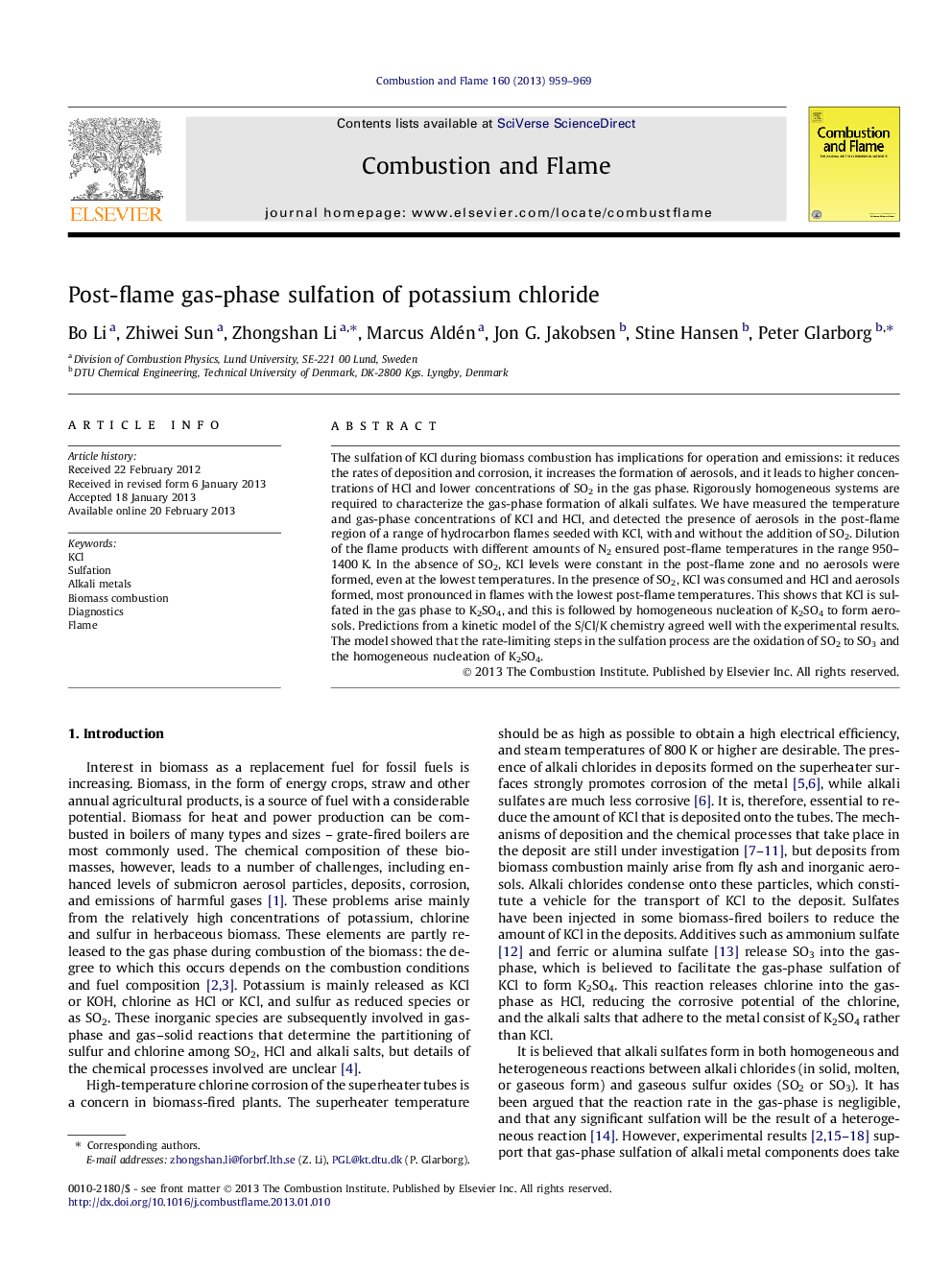| کد مقاله | کد نشریه | سال انتشار | مقاله انگلیسی | نسخه تمام متن |
|---|---|---|---|---|
| 166452 | 457775 | 2013 | 11 صفحه PDF | دانلود رایگان |

The sulfation of KCl during biomass combustion has implications for operation and emissions: it reduces the rates of deposition and corrosion, it increases the formation of aerosols, and it leads to higher concentrations of HCl and lower concentrations of SO2 in the gas phase. Rigorously homogeneous systems are required to characterize the gas-phase formation of alkali sulfates. We have measured the temperature and gas-phase concentrations of KCl and HCl, and detected the presence of aerosols in the post-flame region of a range of hydrocarbon flames seeded with KCl, with and without the addition of SO2. Dilution of the flame products with different amounts of N2 ensured post-flame temperatures in the range 950–1400 K. In the absence of SO2, KCl levels were constant in the post-flame zone and no aerosols were formed, even at the lowest temperatures. In the presence of SO2, KCl was consumed and HCl and aerosols formed, most pronounced in flames with the lowest post-flame temperatures. This shows that KCl is sulfated in the gas phase to K2SO4, and this is followed by homogeneous nucleation of K2SO4 to form aerosols. Predictions from a kinetic model of the S/Cl/K chemistry agreed well with the experimental results. The model showed that the rate-limiting steps in the sulfation process are the oxidation of SO2 to SO3 and the homogeneous nucleation of K2SO4.
Journal: Combustion and Flame - Volume 160, Issue 5, May 2013, Pages 959–969